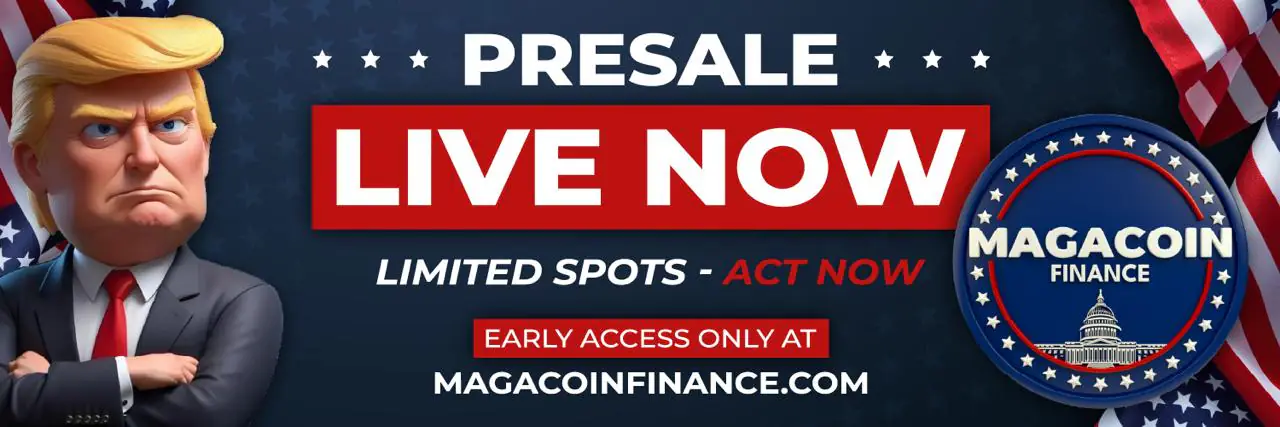7 Undervalued Altcoins Under $10 To Buy — DOT, TRX and UNI Top Analyst Picks
Altcoins trading below $10 are attracting attention from investors preparing for the last run of 2025. The reasoning is straightforward – while the biggest names in the market such as Bitcoin and Ethereum may move more slowly, much like a tank, those less hyped about altcoins may offer bigger percentage gains when the markets turn.
Analysts are naming Polkadot (DOT), TRON (TRX) and Uniswap (UNI) as the top undervalued coins to watch. But they’ve also pointed to other promising names under $10, such as SUI, Hedera (HBAR), MAGACOIN FINANCE, and Aptos (APT). Collectively, these seven coins are creating a list that many feel will have its shine when the next phase of altseason fully starts.

Polkadot (DOT): Interoperability Edge
Polkadot is designed to bridge blockchains. The Relay Chain and parachain ecosystem enable cross-chain interoperability, which helps DOT remain valuable as space evolves. Projects keep launching on Polkadot, and parachain auctions have kept the ecosystem busy.
With DOT now below $10, it’s considered by many to be underpriced relative to its long-term interoperability role.
TRON (TRX): Stablecoin juggernaut
Tron has been a sneaky enabler of stablecoins, most notably Tether (USDT). It’s one of the most used blockchains in payments, and sees billions in transactions pass through its network each day.
Despite this very powerful use case, TRX is currently trading well below $10. Analysts have stated that the stablecoin is a strong underdog pick due to its stablecoin dominance that provides it with a steady utility.
Uniswap (UNI): DeFi’s Flagship
Uniswap is the most popular decentralized exchange for many traders. Being the largest DEX, it has a huge contribution to DeFi through token swaps and liquidity pools. The volumes keep on increasing and UNI (governance token) is at the core of its development.
With UNI currently trading below $10, investors consider it as a means to gain exposure to DeFi infrastructure at a discounted price.
Other Cheap Altcoins Under $10
SUI: Developer Friendly Growth
Being a fast and developer-friendly language, SUI is designed for speed and developer flexibility. Its network is already witnessing the development of decentralized applications and gaming projects. Adoptees and partnerships continue to increase and analysts believe SUI’s under-dollar 10 price also offers ample upside as the ecosystem matures.
Hedera (HBAR): Corporate Bridging
HBAR is making waves with enterprise-scale adoption. It has a global corporate governing council, which sets it apart from other altcoins. Priced at less than $10, HBAR is considered to be a way to speculate on institutional blockchain use cases without paying a premium.
MAGACOIN FINANCE: Growth Prospects With Security
Analysts are also calling MAGACOIN FINANCE undervalued. Fundamentally, it is built on the basis of trust – its smart contracts have been audited by HashEx and CertiK to ensure security and transparency. With a proven team and a growing community, MAGAGOIN FINANCE is making headlines as one of the best altcoins to buy heading into altseason.
Aptos (APT)
Another Layer-1 project with a price tag of less than $10 that analysts are monitoring is Aptos. Built for scalability, APT has continued to grow its developer activity and dApp ecosystem. Analysts claim that its low entry price makes it one of the best altcoin to buy in 2025.

Final Take
Altcoins available for less than $10 are a different kind of value proposition than established names. The potential gain for investors can be achieved much more quickly and percentage returns can far exceed that of larger market cap players.
DOT, TRX, and UNI have a solid portfolio of existing use cases in the space of interoperability, payments, and DeFi. SUI and HBAR are enterprise and scalability coins, while MAGACOIN FINANCE is a combination of security and community growth that analysts believe has the potential to perform well during an altseason. Among the other contenders is Aptos, which is a fast and developer-friendly Layer-1. As 2025 approaches , these undervalued coins could offer the kind of growth potential that investors frequently seek in altseason, lower entry points now with the potential for much higher returns in the future.
To learn more about MAGACOIN FINANCE, visit:
Website: https://buy.magacoinfinance.com
Access: https://magacoinfinance.com/access
Twitter/X: https://x.com/magacoinfinance
Telegram: https://t.me/magacoinfinance
This publication is sponsored. Coindoo does not endorse or assume responsibility for the content, accuracy, quality, advertising, products, or any other materials on this page. Readers are encouraged to conduct their own research before engaging in any cryptocurrency-related actions. Coindoo will not be liable, directly or indirectly, for any damages or losses resulting from the use of or reliance on any content, goods, or services mentioned. Always do your own research.
The post 7 Undervalued Altcoins Under $10 To Buy — DOT, TRX and UNI Top Analyst Picks appeared first on Coindoo.
Vous aimerez peut-être aussi

ETH Chases $9K, ADA Holds $0.88, But BlockDAG’s Awakening Testnet a Must-Watch Move: $0.0013 Ends in 24 hours!

Opportunities and strategies in the DeFi boom: tapping into new potential

